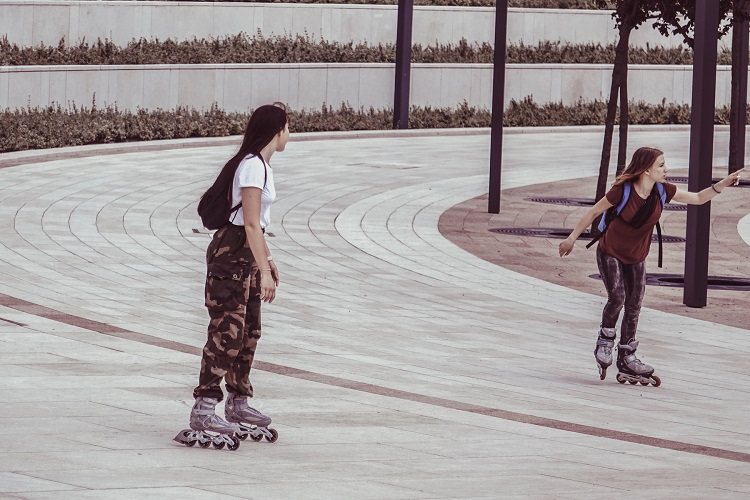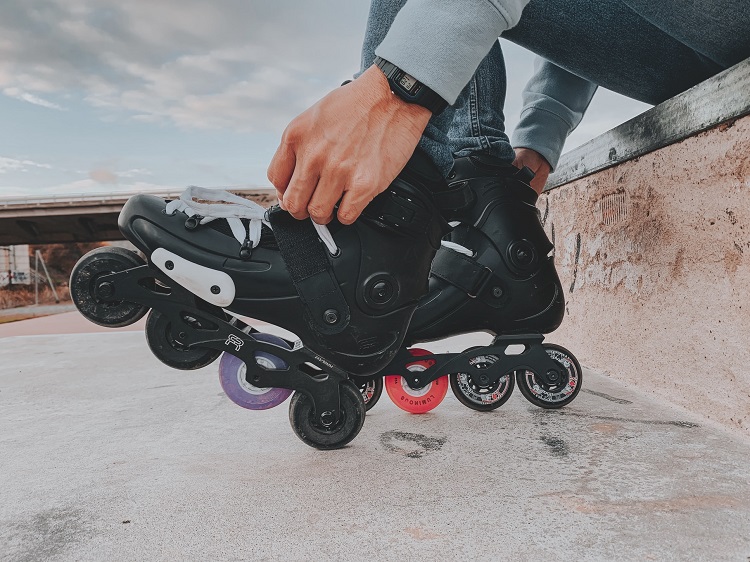How to Choose the Right Inline Rollerblades
2020 has been a year like none of us has seen before. The coronavirus pandemic put strict limitations on movement and opportunities and social distancing became a part of our way of life. Gyms and sports halls were closed, and many had to find a substitute for their normal workout. I didn’t mind it as much, because I’m not a gym person anyways. I liked jogging, cycling and spending more time outside even before the lockdown.
But one day a friend of mine called me and said she’d like to join me. It took me by surprise, but I agreed as we haven’t seen each other in a while. What surprised me, even more, was that she said she’ll take her roller blades. Oh, how It instantly took me back to my childhood, I remembered when my dad was teaching me how to rollerblade and how much fun it was. There is a photo of me showing off my wounded knee after an epic fall and a huge smile on my face (after a lot of crying, of course). I decided I need to get a pair of rollerblades myself. And that’s how my research began.
Interestingly, I realised that inline skating is quite popular. Suddenly I started noticing all those around me riding alone or with friends and family. Whatever your motivation is, inline skating brings people together in these difficult times and leads to progression on and off your skates. You can find inline rollerblades for kids and adults and start rolling, exercise and have fun at the same time.
How to Choose the Right Rollerblades

When it comes to roller skating, most skaters these days prefer inline skates, also known as rollerblades. They feature a streamlined, four wheels in a row design. They are ideal for outdoor skating and are used in a lot of roller sports, including speed skating, roller hockey and freestyle inline skating. Whether you’re a beginner or you already have some skating experience, there are a few different styles of inline rollerblades you can choose from, such as the following.
Recreational Skates
This is the most popular type of inline skates and a good choice if you’re a beginner and casual skater. Their design is focused on comfort and stability and they have a relaxed fit that requires little break-in time. I learned that, for beginners, as I was myself, it’s recommended to limit your search to skate with small wheels as they’ll keep the speed down and control high. Recreational skates are ideal for short, less demanding skate sessions. I used them for a quick skate around the neighborhood, a stroll down the local bike trail or basic fitness.
Speed Skates
These skates are specialized for distance enthusiasts and those skating at a competitive level. They feature an ultra-stiff construction that provides optimal power transfer. I caught up with several inline skaters who told me that to achieve that, you need to make sure they’re properly fitted to your boot. The thing I find most interesting about speed skates is that they require ankle strength that is earned with hard work and experience. One needs to progress towards this type of boot, you can’t just start with one.
Aggressive Skates
This type of skates is specialized for jumping, sliding and grinding in the skate park, or wherever there is a good ledge or drop. Some skaters prefer aggressive skates with wheels under 60mm as they create a low center of gravity that can help perform and land tricks.
Most Important Parts to Consider

Frames
In general, skate frames are constructed from plastic, aluminium or carbon. To make sure you choose a good frame, look for weight, stiffness and durability. The skate’s frame is where the power is generated while skating. Its stiffness is an important aspect because it creates a more direct transfer of energy from your legs through the boot of your skate, down to the frame, then to the wheels and the ground. A longer frame is perfect for endurance rides, while a shorter frame gives you better control over your skates.
Bearings
Bearings are one of the most essential parts of inline skates. They determine the smoothness of your ride, but can also determine your ability to reach higher speeds. Simply put, bearings influence both the speed and quality of your skating experience. The idea is to reduce the friction that exists between a fixed, non-moving frame and a moving skate wheel.
One thing I noticed was that very often bearings are marked with a number on the ABEC scale – ABEC-1, ABEC-3, ABEC-5, ABEC-7, or ABEC-9. This denotes the precision of the bearings’ manufacture and the higher the number, the more precisely the bearings are made.
Wheels
When it comes to wheels, they’re one of the most important factors influencing the effectiveness of your skates. Typically, wheel size is marked in mm on the wheel, where the first number denotes diameter and the second one hardness. Wheel size has always been closely tied with speed, comfort, acceleration and stability.
Consider wheel size when deciding which skate is best suited for your skill level. As I already mentioned above, small wheels are recommended for lower-skilled skaters as they’re easier to control and offer high stability and comfort. Large wheels, on the other hand, are a great choice for more advanced skaters going for more speed and uneven surfaces.
In the end, keep in mind that safety always comes first, so make sure to enrich your rolling experience with protectors, a helmet, proper clothing and all the tools needed to keep your rollerblades in a good shape longer.

